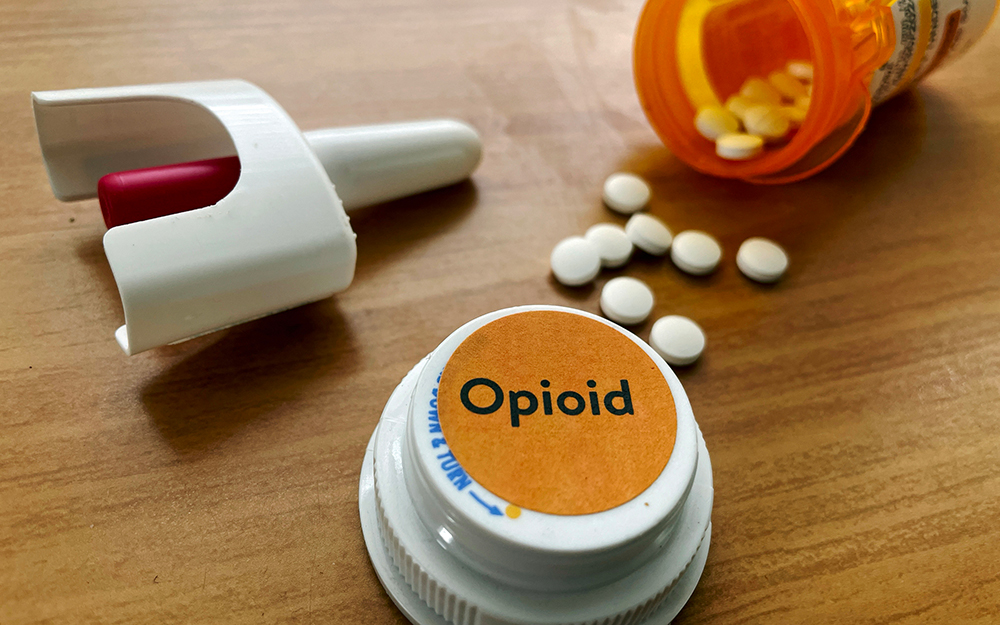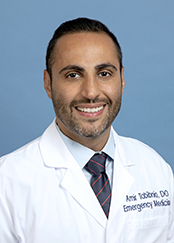Cedars-Sinai Blog
Bridging the Gap From Overdose to Recovery
Feb 18, 2025 Victoria Pelham

Every second is precious in a drug overdose, which cuts off oxygen to the heart and brain.
More than 107,500 Americans died from the crisis in 2023. And nonfatal overdoses send thousands more—roughly 600,000 people each year—to the emergency room, according to the Substance Abuse and Mental Health Services Administration.
As naloxone—a crucial tool for reversing overdoses—becomes more accessible, opioid-overdose deaths are finally starting to fall for the first time since the opioid epidemic began. The shift is opening up a path toward recovery for people overwhelmed and traumatized by opioid use disorder, with the right foundations in place.
“That’s the time to intervene,” said Cedars-Sinai social worker Sari Steinberg. “They come to us [in the emergency room], and now we can really try to get them on track.”
Turning Back the Clock on Opioid-Overdose Deaths
Naloxone (also called Narcan) buys patients time by reversing an overdose from any opioid, including prescription pain pills, heroin and fentanyl. The nasal spray became available over the counter in 2023.
Cedars-Sinai Emergency Department physician Amir Tabibnia, DO, who is also the senior clinical consultant for substance use disorders, stores the drug in his vehicle, alongside his tourniquet. Unlike most emergency medical supplies, naloxone is small enough to fit in your back pocket.
“Naloxone is a safe, fast-acting medication that has an unparalleled ability to save countless lives,” he stressed. “And it’s easy to administer, even for bystanders.”
Spray the naloxone in one or both nostrils, then wait. Within two to three minutes, naloxone can begin to work, restoring breathing and, with it, the chance for recovery.
If the patient doesn’t respond by then, try again—and call emergency services, Tabibnia said. Full reversal might take longer, or more than one dose, depending on the potency of the opioid.
Experts suggest anyone who uses opioids, or has loved ones who do, should carry naloxone. It’s also a good idea if you have a history of substance use disorder or previous overdoses.
Almost half (40%) of opioid-related deaths happen with a nearby witness who could have potentially used naloxone to resuscitate them, according to health agencies.

Amir P. Tabibnia, DO
Amir P. Tabibnia, DO
Safer Use Strategies
In the Cedars-Sinai Emergency Department, the recently launched Bridge Program team educates patients on substance use disorder and ways to reduce harm, including how to access naloxone. Patients can take the spray home for free, with no questions asked and without recording their name.
Program leaders say this helps ease any worry and embarrassment patients might have about seeking out naloxone on their own and removes the extra barrier of a pharmacy visit, guaranteeing they have it on hand.
Another new initiative offers fentanyl testing strips to any emergency room patient who is at risk of overdose and wants them, anonymously. If the patient is using substances or has a relative or friend who might, this allows them to test injections, powders and pills for fentanyl. Fentanyl is around 50 times stronger than heroin and can be unknowingly laced into other drugs, such as cocaine. The strips are helpful for young people who experiment with life-threatening drugs they might not realize contain fentanyl—or their parents.
“We’re not encouraging patients to use drugs. While we strongly promote treatment and recovery, we also want to prevent overdoses and keep people safe,” Tabibnia said. “We don’t judge them.”
Experts say that’s key, because stigma keeps people from opening up.
But addiction can happen to anyone, stresses Cedars-Sinai Emergency Department substance use navigator Jolie Reyna.
What Now?
Reyna, who experienced addiction from when she was 16 to her late 20s, said she knows how humiliating it can feel to lose control over substance use and yourself. Substance use disorder dictated her decisions and behaviors and took a toll on her whole family.
When she meets with overdose patients—in what is often the worst moment of their lives—Reyna comforts them through the confusion, shame, tears and fear.
She uses her experiences to remind people they’re not alone—and they don’t know what the future holds. Like her, they can recover.
That understanding, and a therapeutic technique called motivational interviewing, help patients feel heard and reframe doubts about substance use disorder treatment to encourage them to consider it.
“Planting a seed is so important,” Reyna said.
“There's always hope.”
There isn’t a silver bullet for treating substance use disorder. Cedars-Sinai experts emphasize care should be holistic and tailored to each patient’s unique set of risks and needs.
Prescription medications, including buprenorphine and naltrexone, are pivotal in curbing opioid cravings, relapse and the dangers of overdose and death. Reyna guides patients into community Medication-Assisted Treatment clinics.
Others are connected with longer-term residential substance use disorder treatment, video visits, outpatient programs or street medicine, for those who are unhoused. Mental health care, such as therapy, 12-step programs or other support groups, often addresses underlying causes.
You can survive the discomfort and pain to feel better—and to heal.
“There’s always hope,” Reyna said.
Cedars-Sinai’s Emergency Department and addiction specialists offer comprehensive care for anyone who has a problem with substances, from harm reduction—including medication-assisted treatment—to long-term recovery.


